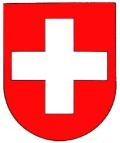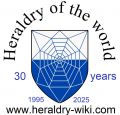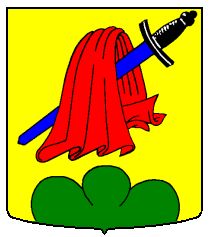Martisberg: Difference between revisions
Jump to navigation
Jump to search
Knorrepoes (talk | contribs) m (Text replacement - "===Origin/meaning=== " to "===Origin/meaning=== ") |
Knorrepoes (talk | contribs) m (Text replacement - "{{media}}" to " {{ch1}} {{media1}}") |
||
| Line 13: | Line 13: | ||
The arms are canting; showing the symbol of St. Martin above a mountain (berg). St. Martin of Tours is normally shown as a knight, cutting his cloak with a sword to give part to a beggar. This is symbolised in the above arms by the sword and cloak. | The arms are canting; showing the symbol of St. Martin above a mountain (berg). St. Martin of Tours is normally shown as a knight, cutting his cloak with a sword to give part to a beggar. This is symbolised in the above arms by the sword and cloak. | ||
{{ | |||
{{ch1}} | |||
{{media1}} | |||
[[Literature]] : - | [[Literature]] : - | ||
Revision as of 06:48, 30 December 2022
Swiss heraldry portal
This page is part of the Swiss heraldry portal |
Heraldry of the World |
|
Swiss civic heraldry:
|
Other heraldry: |
MARTISBERG
Canton : Wallis/Valais
Incorporated into : 2013 Bettmeralp
Official blazon
Origin/meaning
The arms are canting; showing the symbol of St. Martin above a mountain (berg). St. Martin of Tours is normally shown as a knight, cutting his cloak with a sword to give part to a beggar. This is symbolised in the above arms by the sword and cloak.
Literature : -


